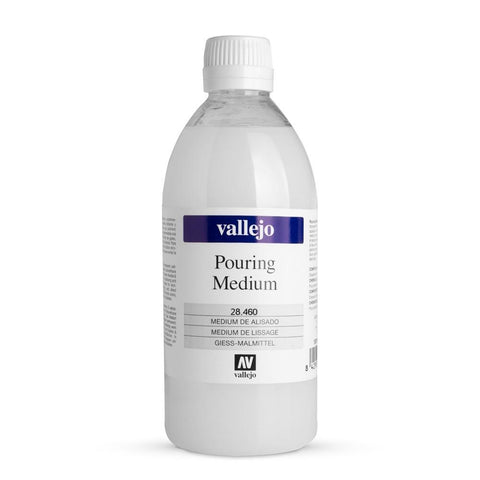How to use Silicone Oil for Acrylic Pouring
Acrylic Pouring is a fluid painting technique, which depends on the art materials being used. This blog will guide you on how to use silicone oil in acrylic pours, and what materials are best to achieve the style you want.
What causes cells in Acrylic Pouring?
These cells are created due to a difference in density between the paint colours. The number of cells and the size of the cells therefore depends on the different densities of the colours. Silicone Oil is one of the ways you can achieve these cells.
How does Silicone Oil work?
Common knowledge is that oil and water do not mix. Acrylic paint is water based, and when mixed with the silicone oil, the two layers of the paint will separate.
Steps to create an Acrylic Pour Painting:
1. Choose your Acrylic Paint
You can go for an acrylic paint that is already fluid, such as Golden Fluid Acrylics, which do not require you to add water, retaining their high pigment. Another alternative is using normal acrylics of a low viscosity, such as Vallejo Studio Acrylics or Golden Heavy Body Acrylics, adding water to achieve the desired consistency.
Pour each colour in separate cups or silicone measuring cups (environmentally friendly option).
2. Add your Pouring Medium
Pouring medium is an additive which is used to make the acrylic paint pour and flow smoothly. Therefore pouring medium acts as a diluting agent and a binder.
Add your pouring medium to each colour in the cups. The ratio of acrylic paint and pouring medium mixture should be approximately acrylic paint 1:1.5. Mix each colour separately with a wooden craft stick carefully.
3. Add the Silicone Oil Cell Medium
Add 2-3 drops of silicone oil per 15ml of acrylic paint, in some of the colours. It is not required to add this to each colour, however it is suggested to add it to the base colour. Mix it carefully.
4. Pour it!
There are several methods used when pouring the acrylic paint on the canvas or wooden panel. Following the video, the dirty pour is a common technique, where all the colours are poured into the same cup (do not mix), then pouring onto the canvas. Move the canvas around, until all the surface is covered.
5. Heat
Heat the paint using either a heat gun or a torch. A hairdryer is not suggested as excess wind will move the paint too much. As the paint is heated, the cells will begin to burst and create the desired effect.




